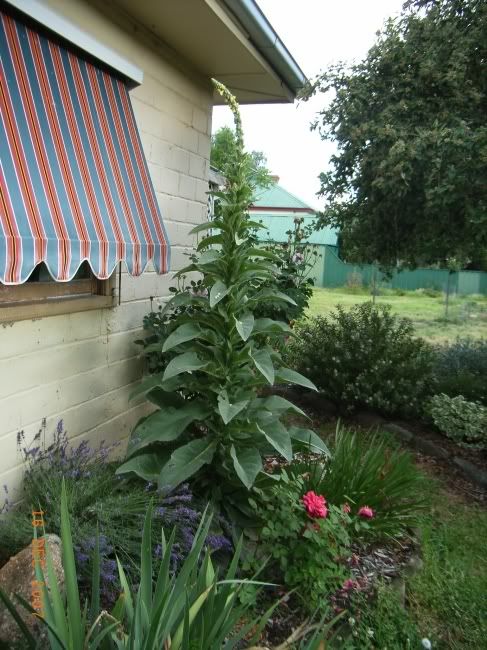|
|
Post by braided-rug on Jul 14, 2007 16:33:08 GMT 10
|
|
|
|
Post by braided-rug on Jul 14, 2007 16:36:18 GMT 10
Looking at these photos it looks like I have one growing in the garden. I got it from the craft shop, from another garden. tinyurl.com/2826tbIt is also called lambs tongue. |
|
|
|
Post by cupcake on Jul 17, 2007 5:08:10 GMT 10
That is very intereseting Braided rug. This is considered a weed here. I don't have any growing in my yard but I always admired this plant whenever I see it growing alongside the road. I never thought it could be used for making tea. I will have to look into that.  |
|
|
|
Post by braided-rug on Jul 17, 2007 8:58:29 GMT 10
I have seen it as a weed too.
The one I have growing in the garden seems larger.
|
|
|
|
Post by braided-rug on Jul 19, 2007 13:27:23 GMT 10
|
|
|
|
Post by cupcake on Jul 20, 2007 4:00:26 GMT 10
I was at a nature preserve yesterday and I saw some growing. I thought about you when I did  I saw a large type (probably like you have) and a thinner type. I also found miniature dandy lions. I had never seen small ones before so (shhhh, don't tell anyone) I plucked a piece to start in my yard. Ooh the tea looks interesting. |
|
|
|
Post by cupcake on Jul 23, 2007 16:35:03 GMT 10
I saw a very large and beautiful specimen yesterday while taking a walk. It was growing in a field of overgrown grass, and the field was full of litter. How sad for that plant to be there. It was thriving though.
|
|
|
|
Post by braided-rug on Jul 23, 2007 17:16:13 GMT 10
Yes, they don't seem to mind.
|
|
|
|
Post by braided-rug on Aug 23, 2007 10:19:12 GMT 10
"There are several species of mullein which occur as wild plants in Britain, all of them normally biennials and all, in their second year, producing a stately spike of flowers. By far the commonest, however, and the one normally referred to by herbalists, is the common or great mullein (Verbascum thapsus). The yellow flowers are almost flat and almost stemless. The leaves and main stem are thickly coated with white woolly down, from which it gets the alternative name flannel weed. The specimens shown in this photo were about seven feet (210 cm) tall. It is usually found in dry grassy or bare places, and produces prodigious quantities of tiny seeds in late summer. As well as being used to relieve varicose veins, mullein has many other uses. An infusion of flowers (fresh or dried) is used for coughs, cramp, gout and bronchitis, while the same as a lotion can bring relief to inflamed eyes, wounds, skin rashes and burns. A poultice of leaves is said to help with neuralgia and toothache, while the root boiled in a little wine is a cure for diarrhoea." From: homepages.nildram.co.uk/~jimella/herbs.htmI think I am going to dig mine up and move it to the new garden. I can't wait to see if the flowers are like the weeds we have here or stemless. |
|
|
|
Post by braided-rug on Dec 3, 2007 13:01:18 GMT 10
I am still hoping my plant pictured in the new garden is mullein.  |
|
|
|
Post by braided-rug on Dec 17, 2007 11:21:44 GMT 10
It seems that it is going by the flower. It grows so quickly. Now a caterpillar or something is eating it.  It is the second year we have had it and this is the year it has flowered.  |
|
|
|
Post by braided-rug on Dec 31, 2007 16:20:19 GMT 10
I found a lovely photo featuring this plant in one of my old magazines, House & Garden 2001 May page 126. Used the information on that page to find this photo: www.anniesannuals.com/signs/v%20-%20z/verbascum_olympicum.htmThe other flowers in the lovely garden bed in the magazine where kniphofia "candlelight", yellow mustard called "Big Red", Wachendorfia, climbing rose Lamarque and Bloomfield Courage and pink godetias. |
|
|
|
Post by braided-rug on Mar 14, 2008 13:43:21 GMT 10
There were a group of flowers and the seeds dried and we collected them. They are very fine.
|
|
|
|
Post by braided-rug on Jul 19, 2008 15:09:34 GMT 10
|
|